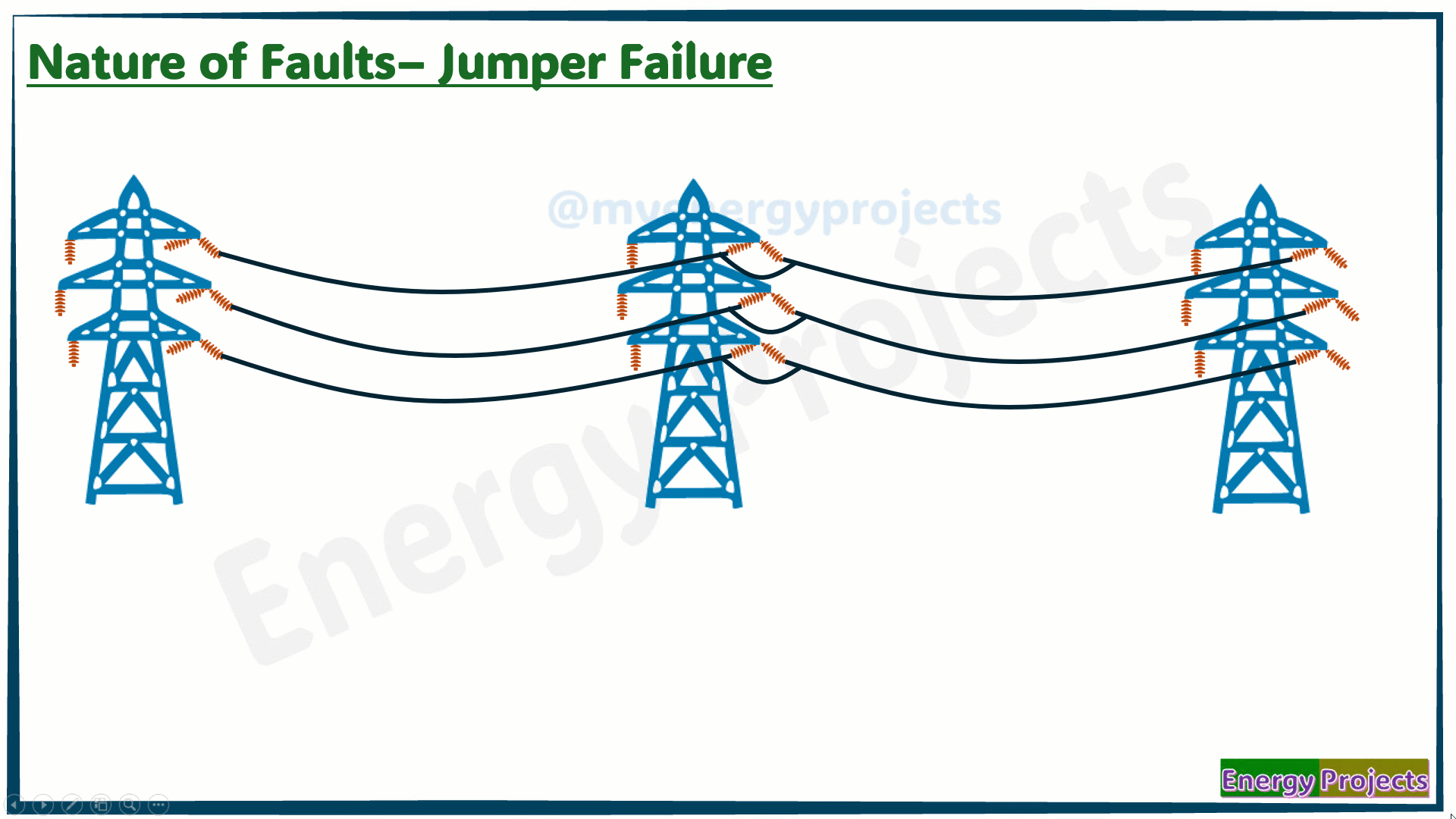12.Nature of Overhead Line Faults
1. Tree / Branches Falling:
Falling trees or overhanging branches can make contact with power lines, leading to short circuits or line breakage. This often occurs during storms or high winds, making it a common cause of power outages. Vegetation management near transmission corridors is critical to preventing these faults.
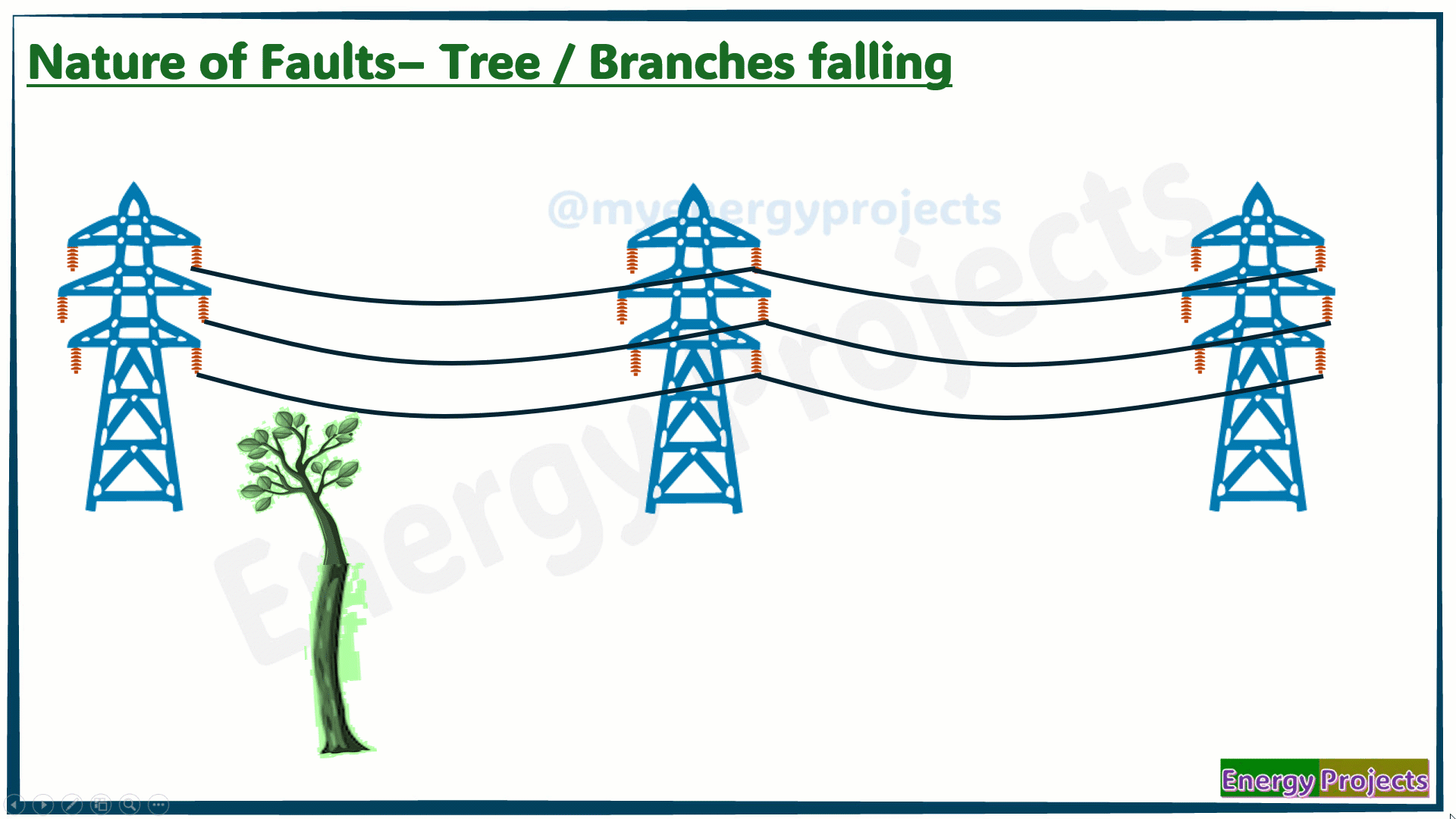

More
Single Busbar Configuration
Single Busbar with Bus section Configuration
Single Busbar with Transfer busbar configuration
Single Busbar with Bus section + Transfer bus coupler + Section Isolator configuration
Double Busbar with Bus coupler Configuration
Double Busbar with Bus coupler + Bypass Isolator Configuration
Double Busbar with Bus coupler + Transfer Buscoupler configuration
Mesh Busbar configuration
One and Half Breaker Busbar Configuration
Nature of Overhead Line Faults:
Overhead line faults commonly arise from environmental conditions, physical damage, or aging infrastructure. These faults include conductor snapping, insulator failure, short circuits due to vegetation contact, and lightning-induced surges. External elements like birds, animals, or strong winds can also disrupt normal operation. Regular inspections and preventive maintenance help in early fault detection and reduction of unplanned outages.
2. Broken Insulators:
Cracked or shattered insulators compromise the electrical isolation between power lines and supporting structures. This can cause flashovers or leakage currents, leading to system instability. Such faults are often due to aging, mechanical stress, or environmental wear.
4. Lightning Strikes:
Lightning discharges inject extremely high voltage into power systems, potentially damaging equipment or causing temporary outages. Without proper grounding and surge protection, lines and transformers are vulnerable. Lightning protection systems are essential in exposed regions.
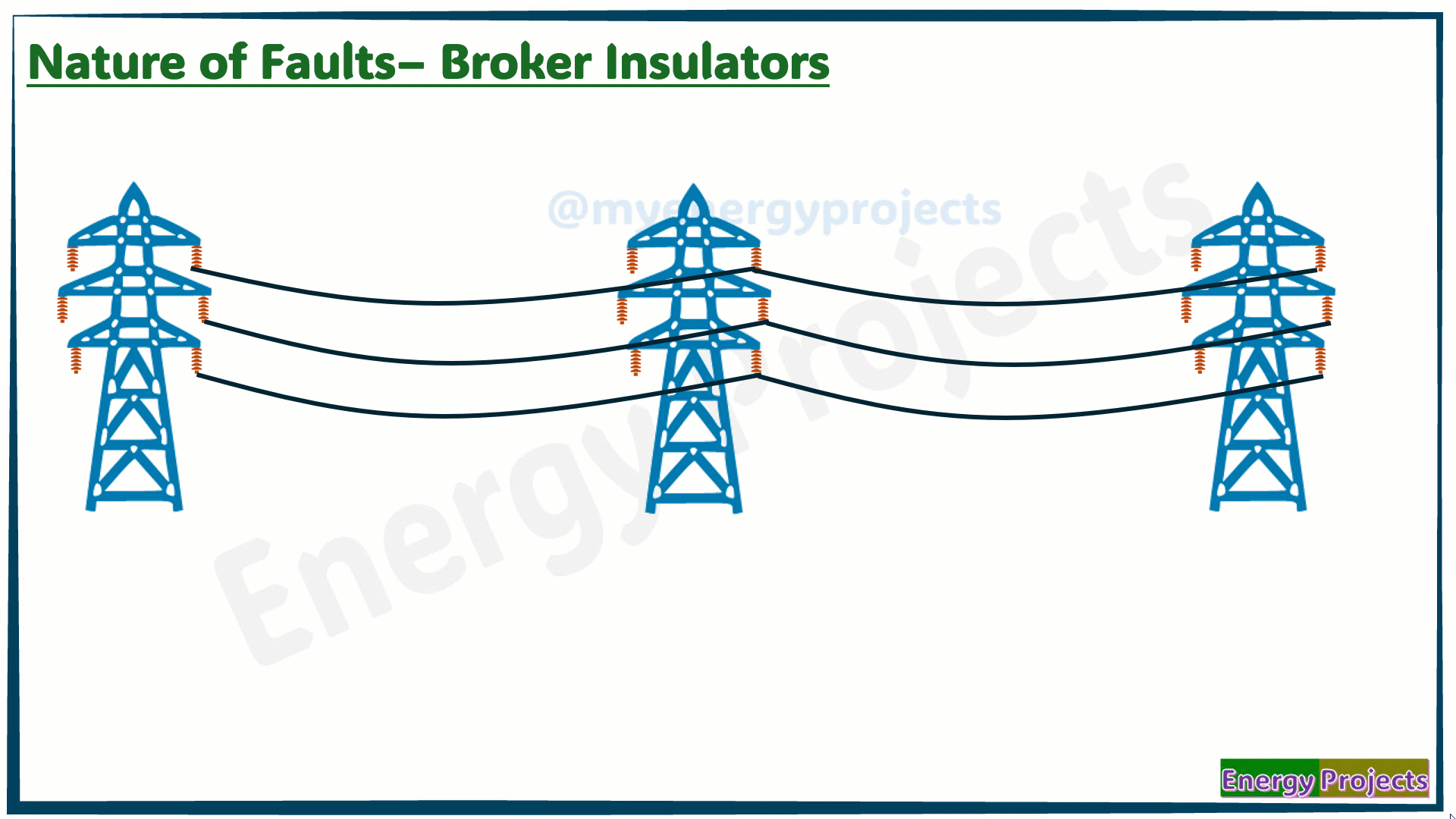

3. Broken Conductors:
When conductors snap or deteriorate, they disrupt the flow of electricity and may fall, creating safety hazards. Causes include corrosion, overloading, mechanical stress, or external impact. Regular inspection and tension management can reduce this risk.
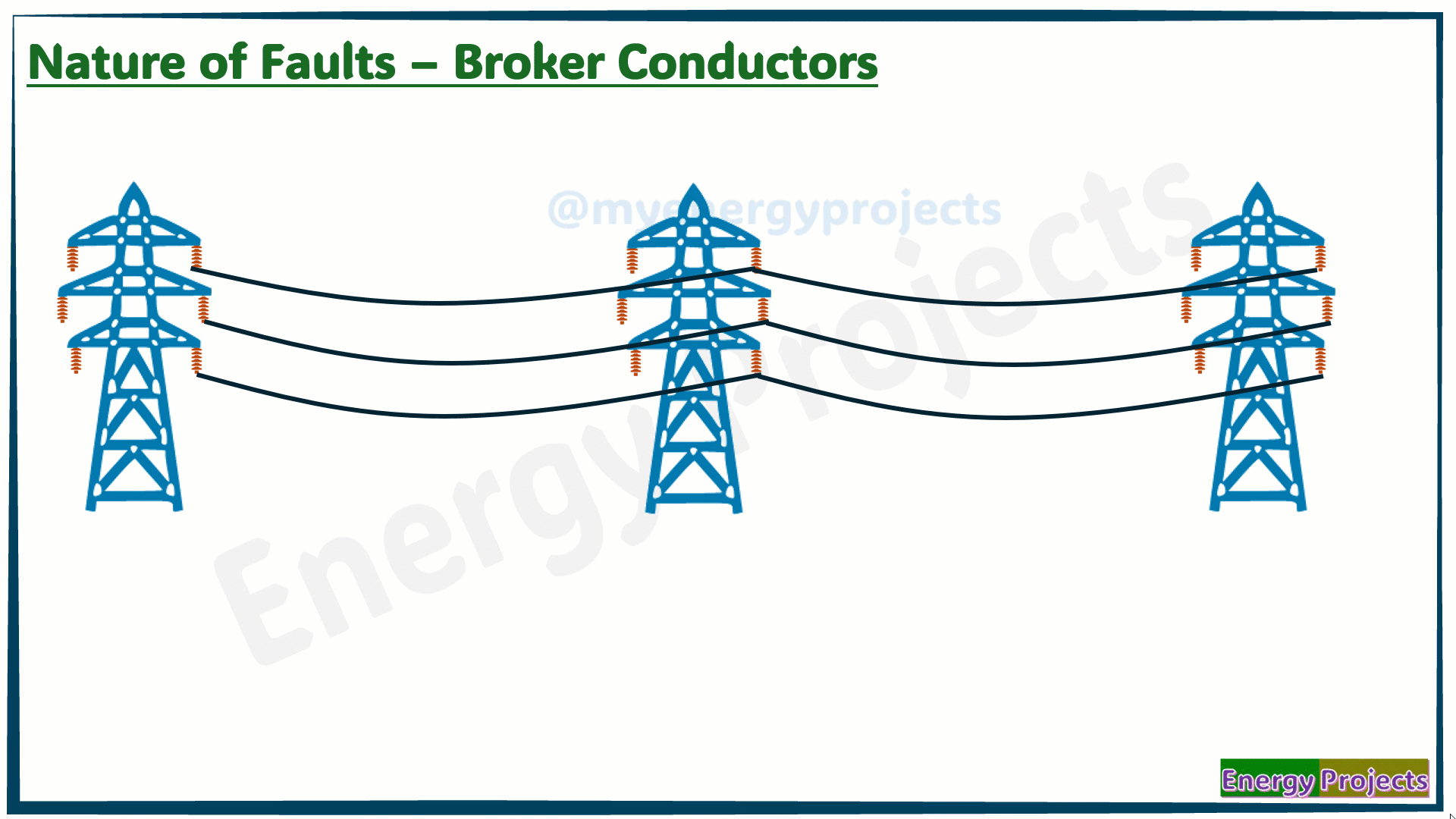

5. Snakes / Monkeys/ Animals:
Animals like snakes and monkeys climbing on electrical equipment can cause short circuits or tripping of systems. Wildlife interference is more common in rural or forest-adjacent substations. Animal guards and barriers help prevent such intrusions.
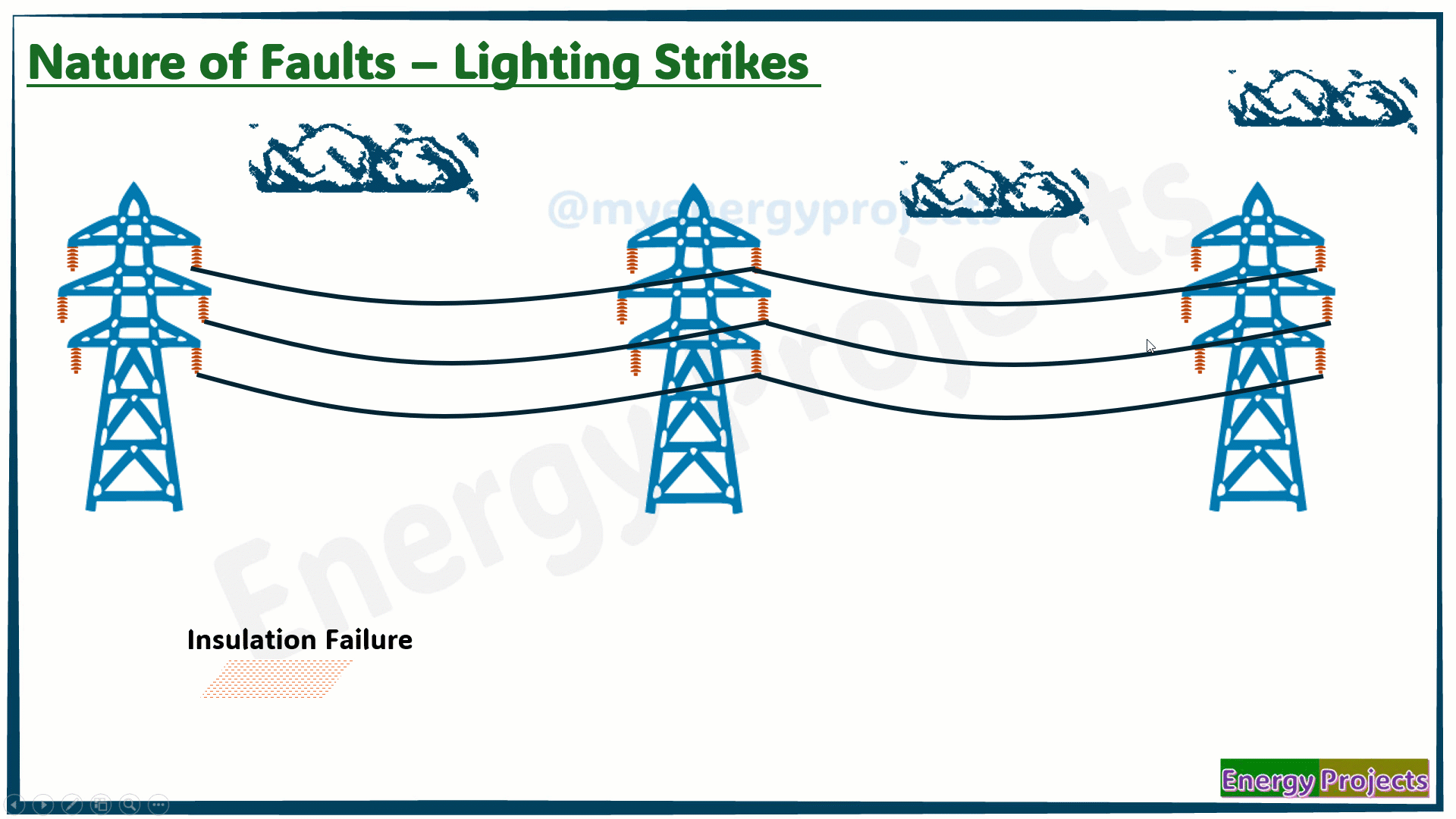

6. Polluted Insulators:
Accumulation of dust, salt, or industrial pollutants on insulators can form conductive paths during moisture exposure, leading to flashovers. This is particularly problematic in coastal or industrial areas. Cleaning cycles and coated insulators mitigate pollution-related issues.
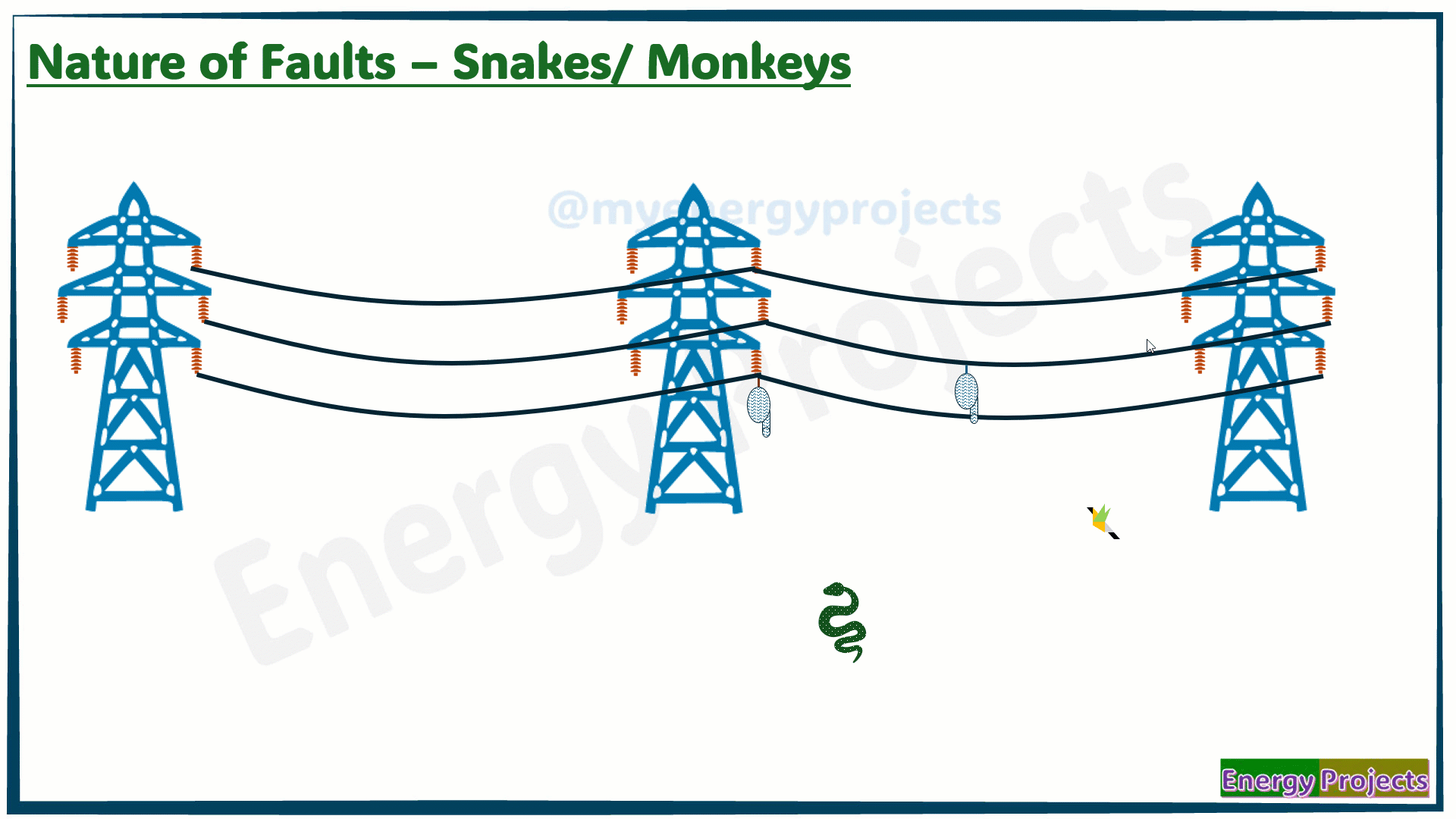

7. Tower Collapse:
Transmission towers may collapse due to extreme weather conditions, corrosion, poor maintenance, or natural disasters like earthquakes and floods. In some cases, foundation failure or intentional damage (sabotage) can also be contributing factors. Such incidents often lead to large-scale power outages and require significant time and resources for restoration. Ensuring robust structural design, regular inspections, and strong foundations is essential to avoid these failures.
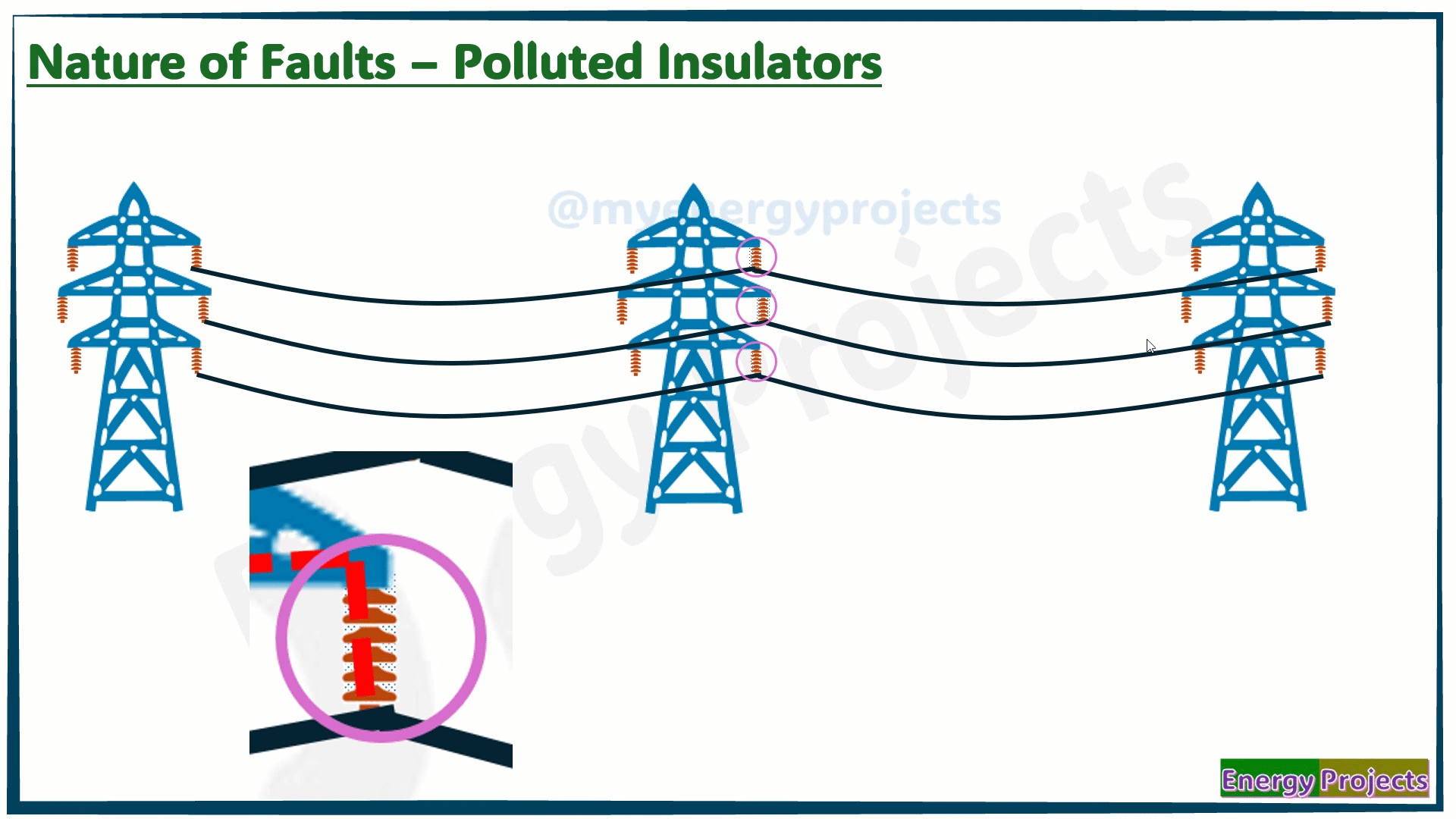

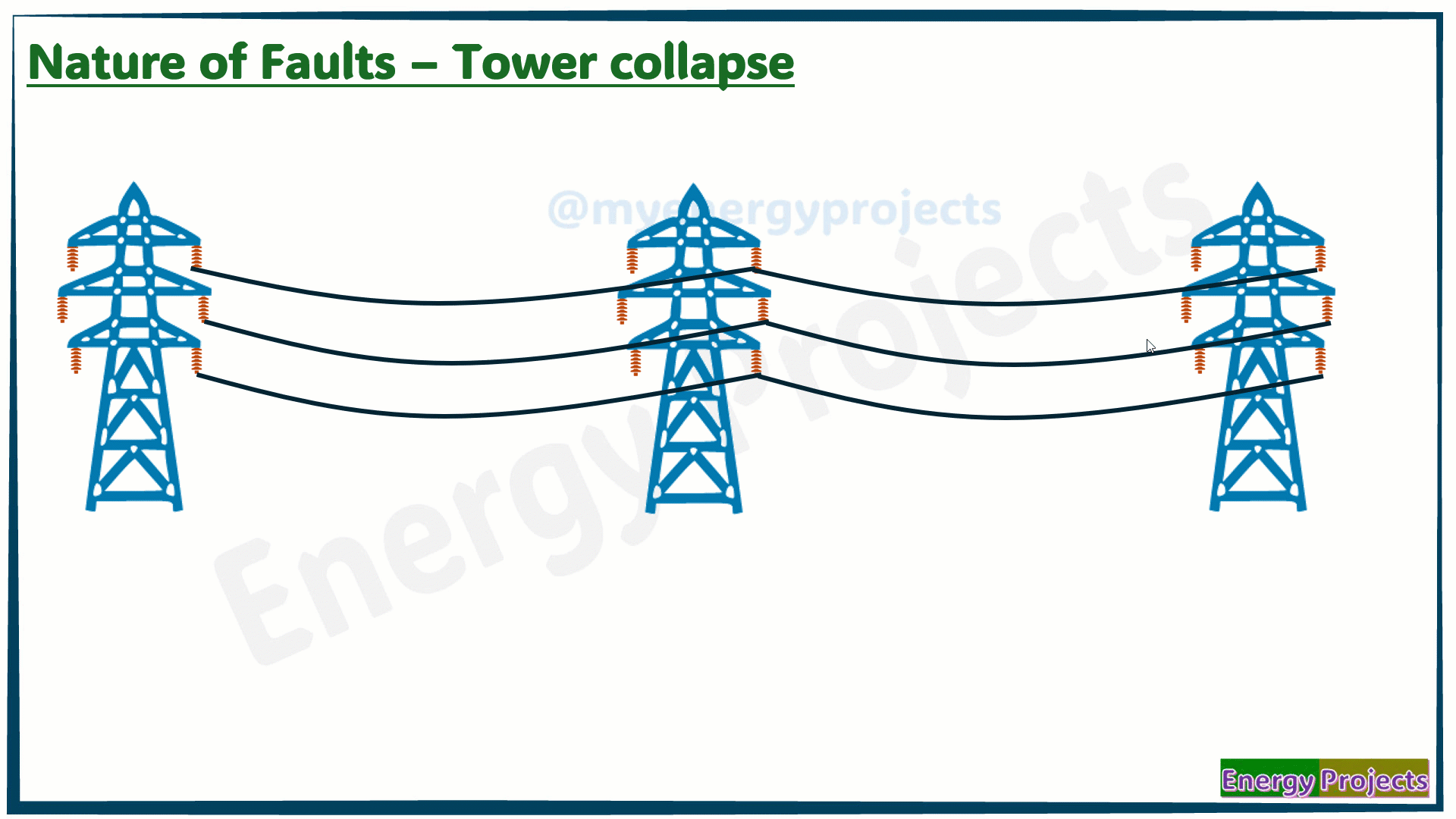

8. Jumper failure:
Jumper failure in overhead power lines can lead to significant electrical faults, especially where suspension-type insulators are used to connect adjacent line sections. These jumpers act as critical links, and any mechanical damage or disconnection can break the circuit. In systems with suspension insulators, a failed jumper may swing or fall, potentially causing short circuits or grounding faults. Such incidents not only disrupt power flow but can also damage surrounding components and reduce system reliability.
